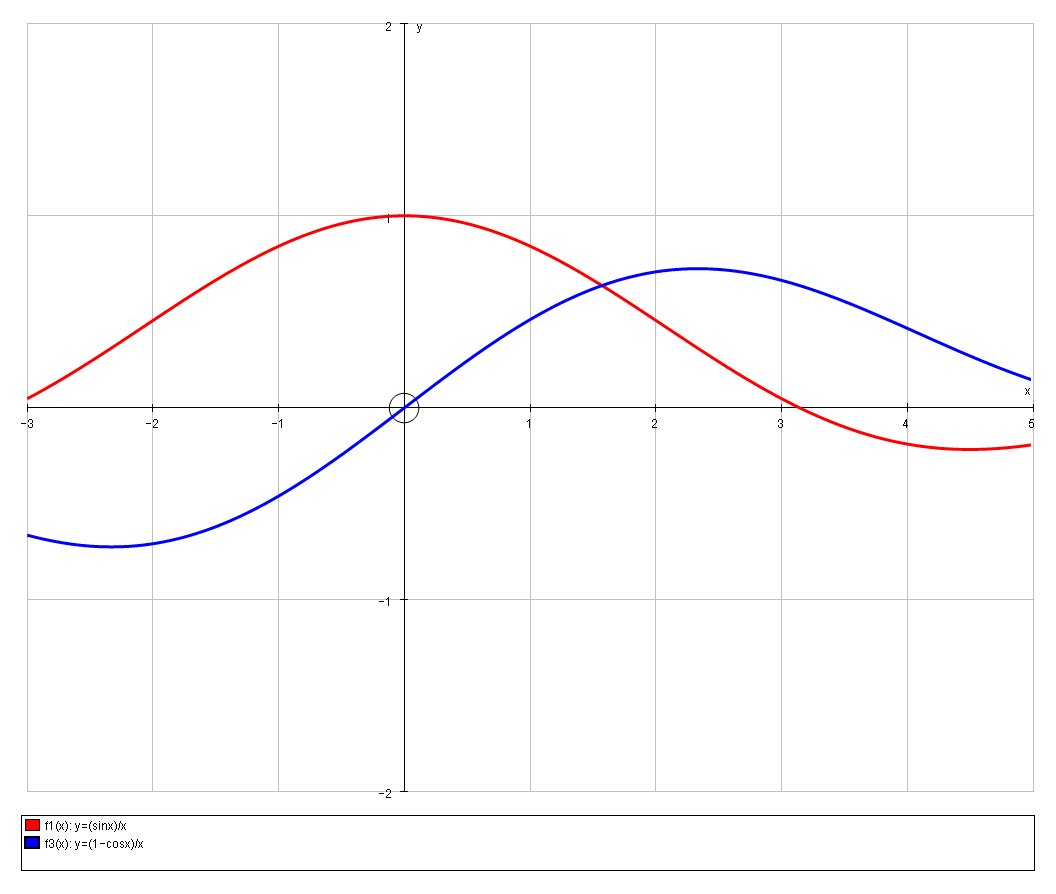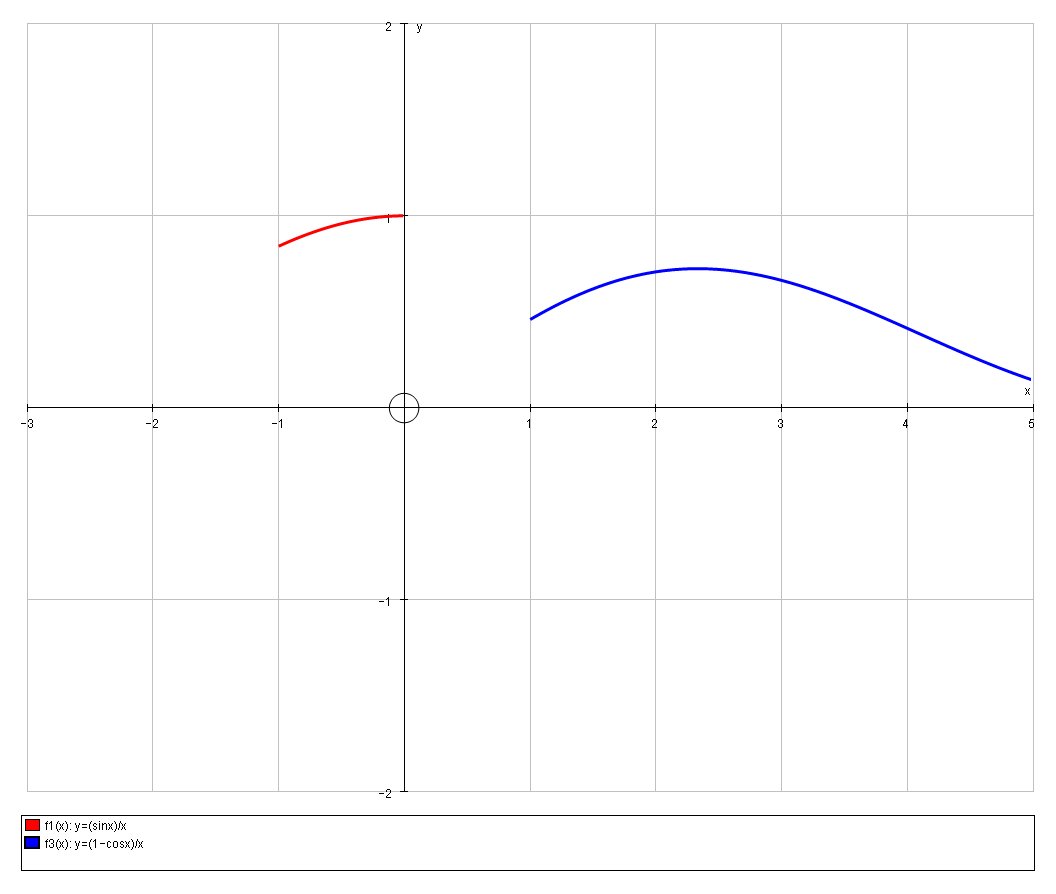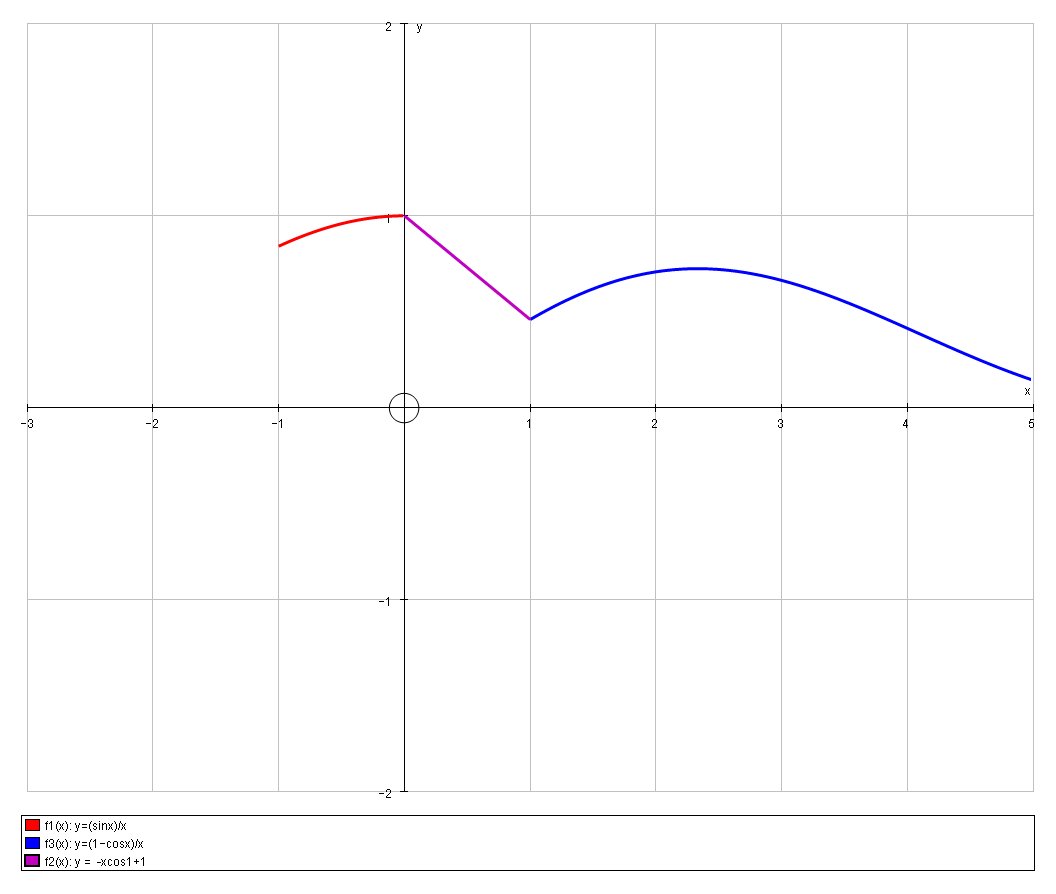Consider the function defined by f(x)= sinx/x if #-1 <=x < 0#, ax+b if #0 < =x <= 1# and #(1-cosx)/x# if x >1, how do you determine a and b such that f(x) is continuous on [-1,2]?
1 Answer
# a = -cos1 ~~ = 0.540 #
# b = 1 #
Explanation:
Assuming we are working in radians.
We want our function,
# f(x) = { (sinx/x,-1 le x lt 0), (ax+b, 0 lt x le 1), ((1-cosx)/x, x gt 1) :} #
Let us denote each sub-function by
# f(x) = { (f_1(x)=sinx/x,-1 le x lt 0), (f_2(x)=ax+b, 0 lt x le 1), (f_3(x)=(1-cosx)/x, x gt 1) :} #
We can graph for illustrative purposes,

And we note that all three sub-functions are continuous in their own right.
If we now examine the functions

So, as we expected there is a discontinuity at the junctions between
Using some standard calculus trigonometry limits we have:
When
#x=0 => f_1(x) = lim_(x rarr 0) sinx/x = 1 #
When#x=1 => f_3(x) = lim_(x rarr 0) (1-cosx)/x = 1-cos1 #
So the coordinates of the discontinuities are:
#(0,1)# and#(1,1-cos1)#
So using the straight line point/point equation:
# (y-y_1)/(y_2-y_1) = (x-x_1)/(x_2-x_1) #
then the equation we seek is:
# (y-1)/(1-cos1-1) = (x-0)/(1-0) #
# :. (y-1)/(-cos1) = x #
# :. y-1 = -xcos1#
# :. y = -xcos1+1#

Thus comparing
# a = -cos1 ~~ = 0.540 #
# b = 1 #

